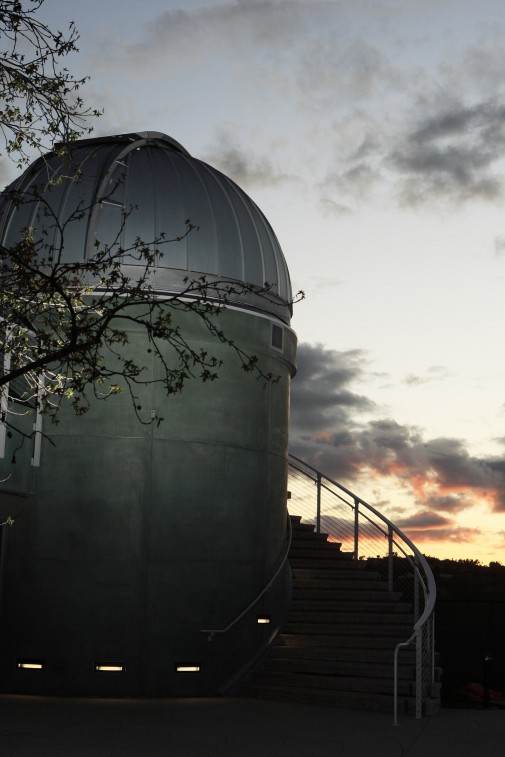Viewing Goes Lunar with a Chance of Saturn
By
Westmont
 Weather permitting, Westmont’s powerful Keck Telescope hopes to zoom in on the craters of the Moon during a free, public viewing of the stars on Friday, Dec. 21, beginning at 7 p.m. The best viewing generally occurs later in the evening. In case of inclement or overcast weather, please call the Telescope Viewing Hotline at (805) 565-6272 and check the Westmont website to see if the viewing has been canceled.
Weather permitting, Westmont’s powerful Keck Telescope hopes to zoom in on the craters of the Moon during a free, public viewing of the stars on Friday, Dec. 21, beginning at 7 p.m. The best viewing generally occurs later in the evening. In case of inclement or overcast weather, please call the Telescope Viewing Hotline at (805) 565-6272 and check the Westmont website to see if the viewing has been canceled.
The Moon, which will be nine days old, will be high in Pisces that evening. “We should be able to see some detail without straining our neck,” says Thomas Whittemore, Westmont physics instructor. “The crater triplet of Ptolomaeus, Alphonsus and Arzachel may show some interesting details in their shadows earlier in the evening. This gorgeous triplet will lie just beyond the Moon’s terminator, the light-shadow boundary, as viewing begins.”
Whittemore says that the gas giant Jupiter may also be good to view. “One moon of Jupiter, Io, will be alone on one side of Jupiter, and the other three Galilean moons, Europa, Ganymede and Callisto, will be lined up on the other side of Jupiter.”
The Double Cluster in Perseus, also known as NGC 884 and NGC 869, may also be featured at the viewing. “They’re a pair of open clusters about 7,600 and 6,800 light-years away — so they are close to one another in space,” Whittemore says. The clusters’ ages, based on their individual stars are relatively young. NGC 869 is 5.6 million years old and NGC 884 is 3.2 million years old. In comparison, the Pleiades have an estimated age ranging from 75 to 150 million years. “There are more than 300 blue-white super giant stars in each of the clusters,” he says. “They’ll be a real Christmas treat in Westmont’s 8-inch refractor.”
The Keck Telescope is housed in the observatory between Russell Carr Field and the track and field/soccer complex. Free parking is available near the baseball field. Here is a pdf of the campus map.
Filed under
Campus Events, Faculty and Staff, Press Releases